What to consider when disguising a battery
Before you start disguising, you need to know a few important nuances:
- First of all, you need to understand that heat will be lost with any method.
- Convection air flows should not be fenced off with anything, this is the only way to maintain uniform heating of the room, and the windows will not fog up.
- For various emergencies, it is worth thinking in advance about free access to the threaded connections and the radiator – this can be a window or a removable structure, for example, a door with hinges.
- For repairs, the tap, thermostatic head and other elements of the heating system must remain easily accessible.
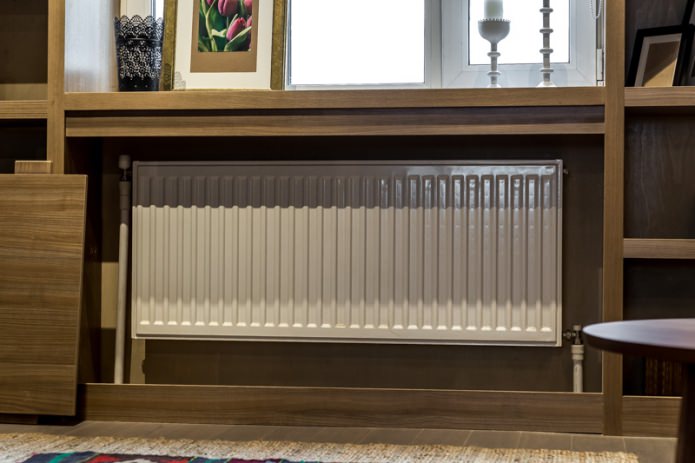
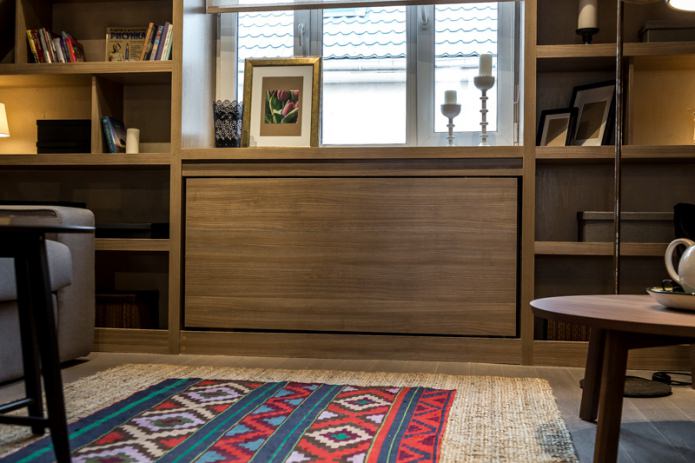
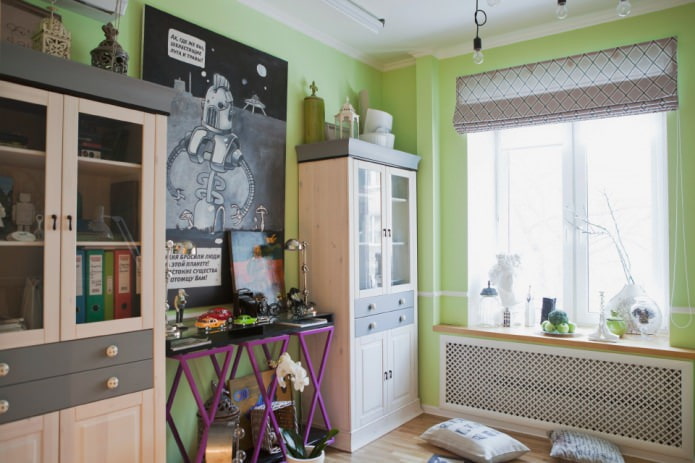
The best ways to hide radiators beautifully
There are several ways to hide batteries, in this section we will consider the most popular and effective.
Hanging screen
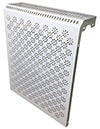

Today it is the most practical and popular method, most often such a design is made of metal and has its advantages:
- easy installation;
- heat exchange remains the same;
- can be made with rounded corners, which reduces the risk of injury.
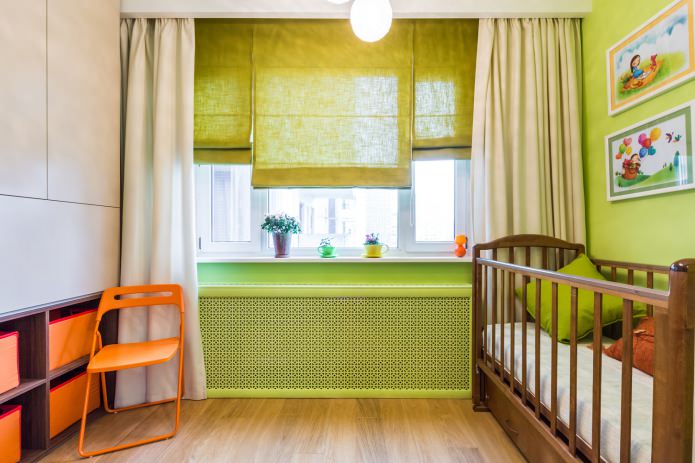
Glass screens
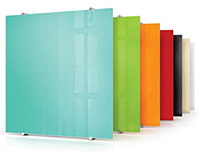

A screen made of glass will be an interesting and stylish solution, especially for those who choose minimalism or a modern style in interior design. Photo printing or various patterns can be applied to the glass, but this method is not a budget option. Installation is carried out on a screw holder, but holes will have to be drilled in the wall. However, the heating radiator will be stylishly protected. This option will fit into any interior.
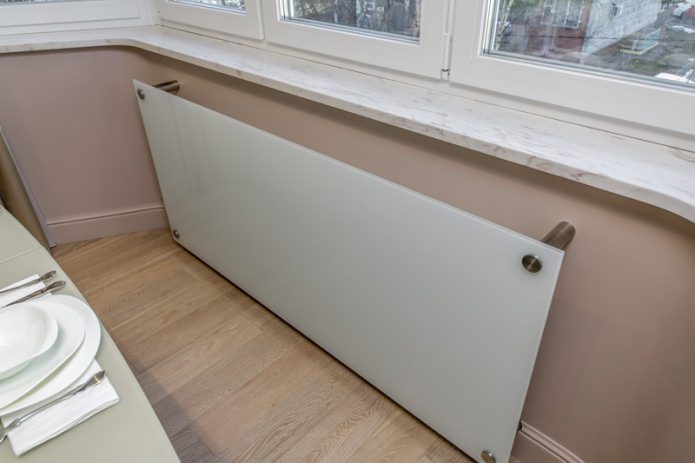
Box screens


Box screens are a great option for decorating radiators.
- They will help to completely hide the battery.
- The box can become an interior item.
- Screens are easy to install, easy to care for.
- They protect against burns or other injuries.
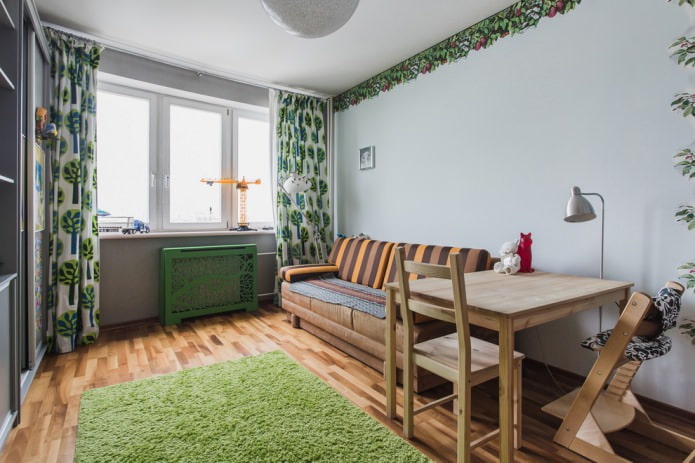
The photo shows an original green wooden box in the interior of a child’s room.
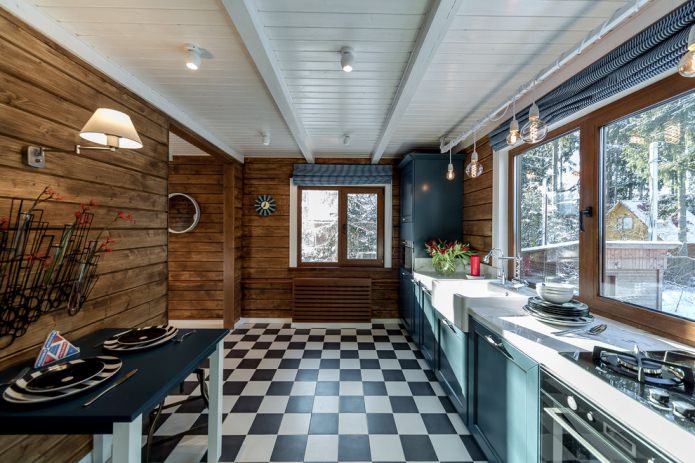
Floor-length curtains
Don’t forget about the most popular way to hide batteries – just hang opaque or translucent curtains over them. Using this method, over time you will even forget that there are pipes and a radiator behind the curtains. The main thing is to choose curtains that will look harmonious and not show everyone that there is something behind them.
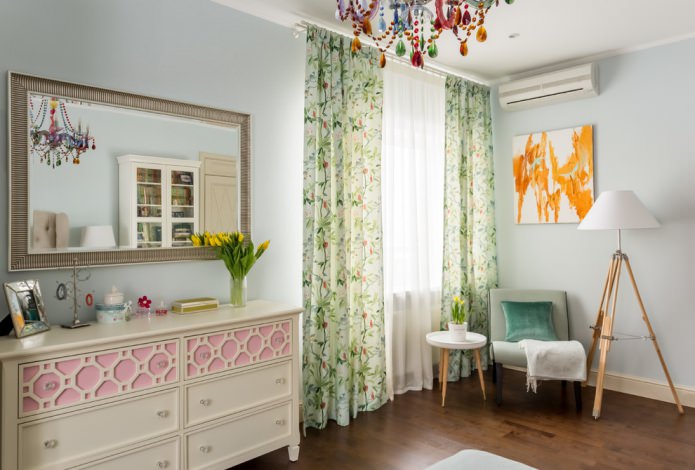
Painting in the color of the walls
How to hide a heating battery on the wall if other designs are “prohibited”. There is only one way: paint it the same color as the wall.
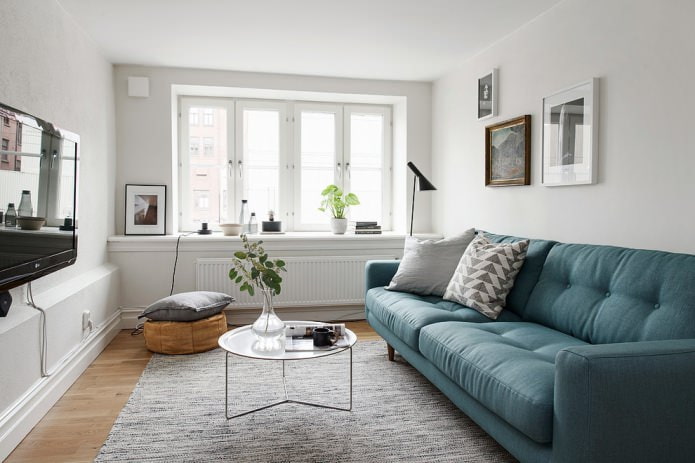
Wooden frame
Wood will create coziness and warmth in the apartment, and the battery camouflage will be elegant and beautiful. This option is for those who arrange their home in an eco-style, using natural materials. These methods of hiding batteries can be used as a stand for home decor.
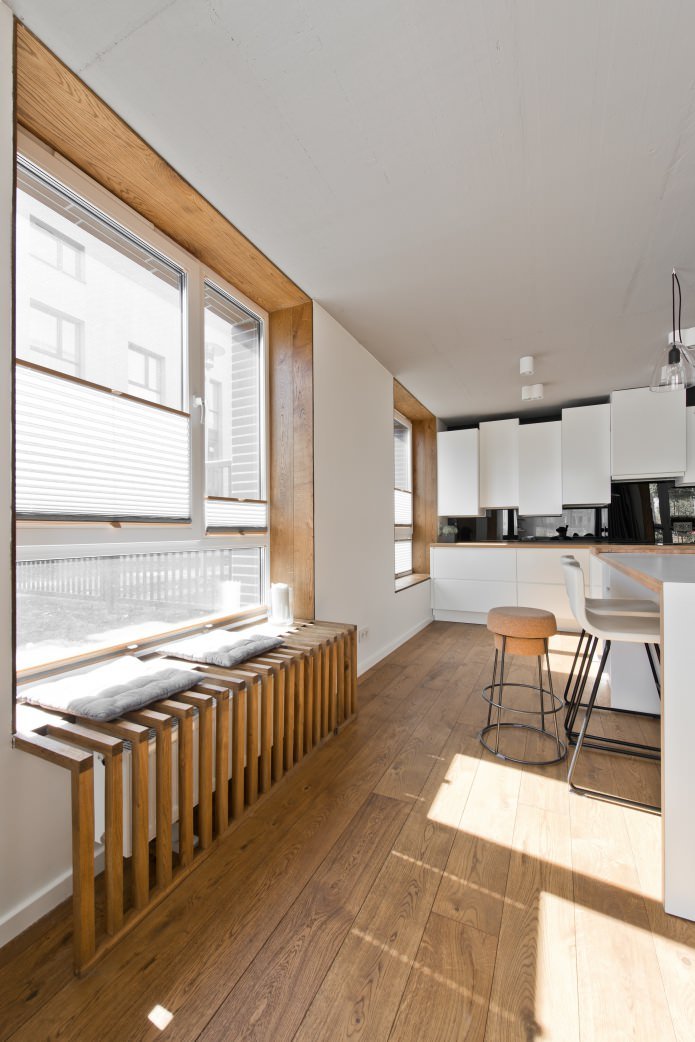
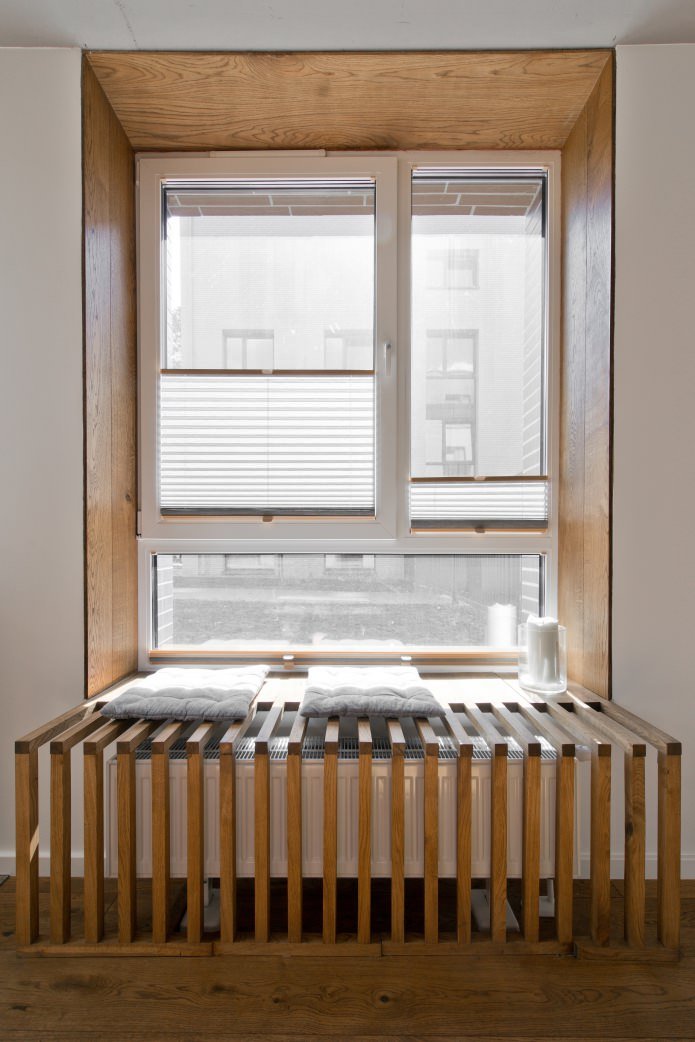
In the photo, ordinary wooden blocks stylishly hide the battery in the kitchen.
Built-in furniture
Another common way to hide heating battery, is considered to be custom-made furniture or built-in furniture (shelves, cabinets, folding tables, seats).


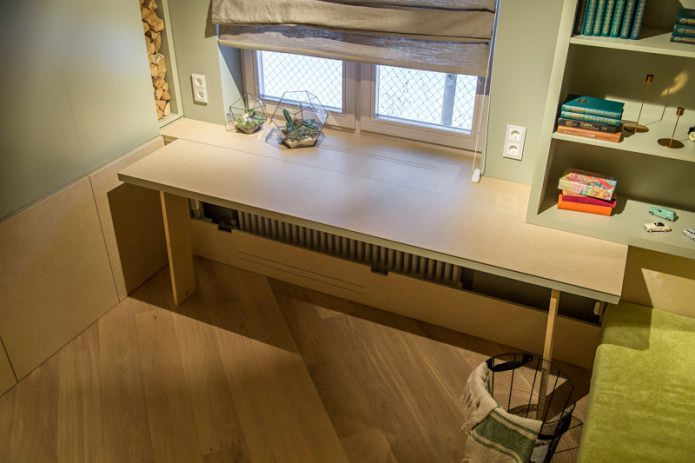
Hide the radiator with furniture
Arrange the furniture, for example, an armchair or a desk, so that it covers the radiator. Cast iron radiators are not attractive to many, but furniture can hide them.
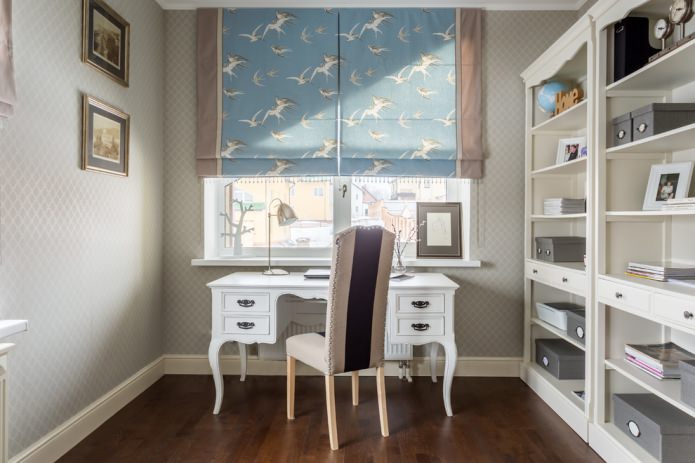
Replace with a designer model
For those who do not want to invent anything, unique designer ways to hide radiators have been developed, which initially have a beautiful appearance and you simply do not want to hide them.
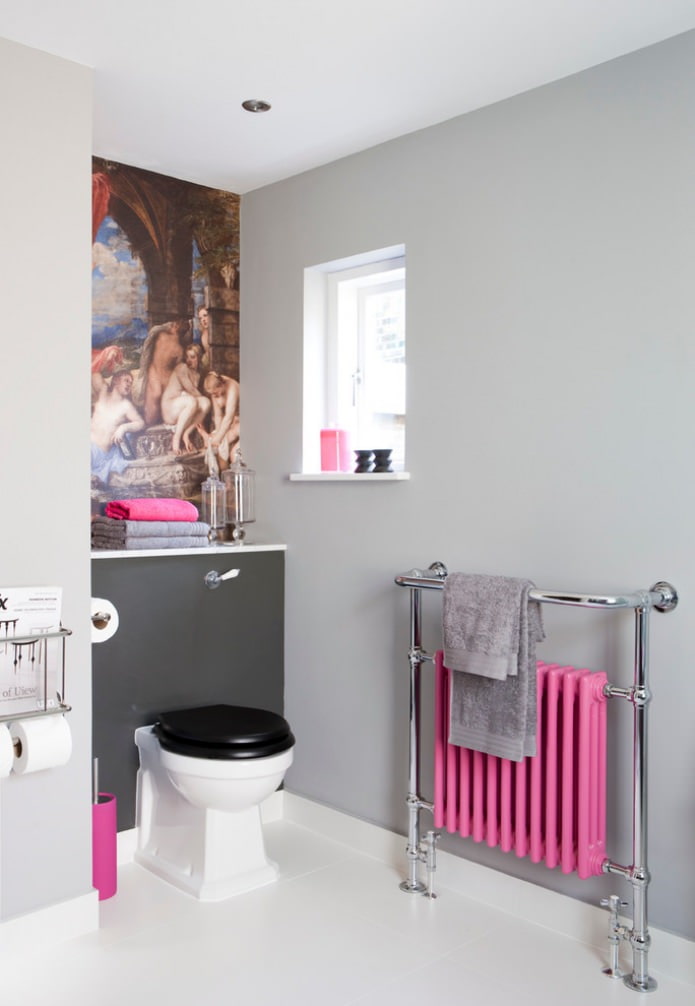
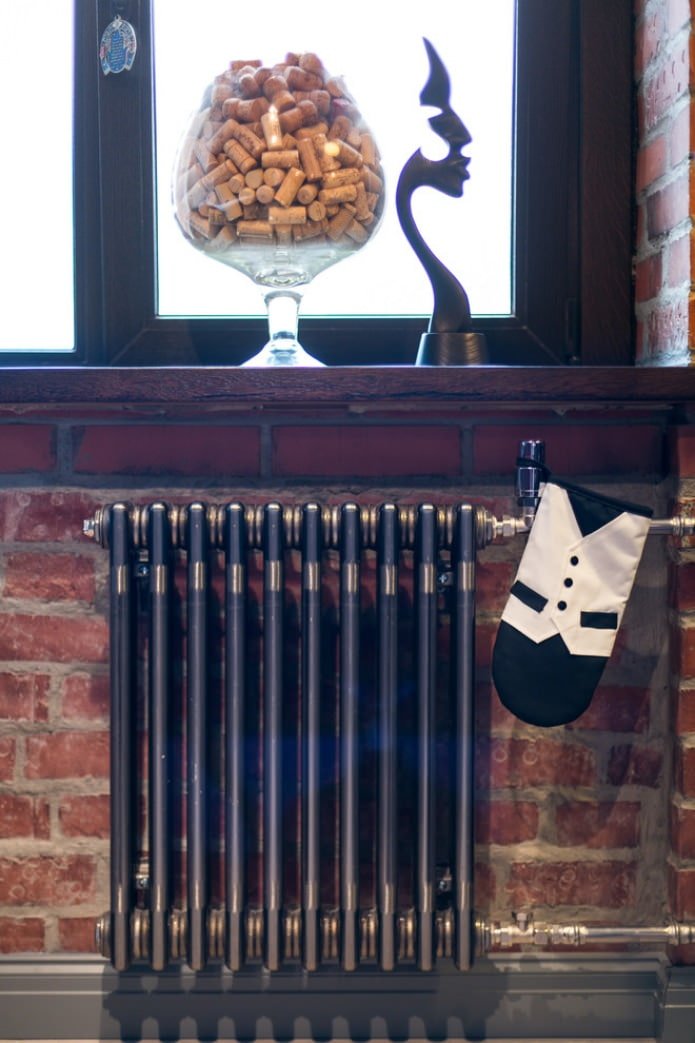
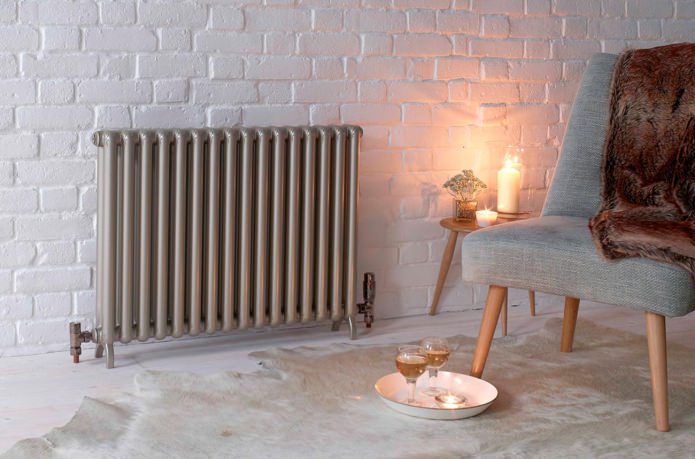
Original ideas
There are many creative ideas that can turn batteries into a decorative element:
- Forged products
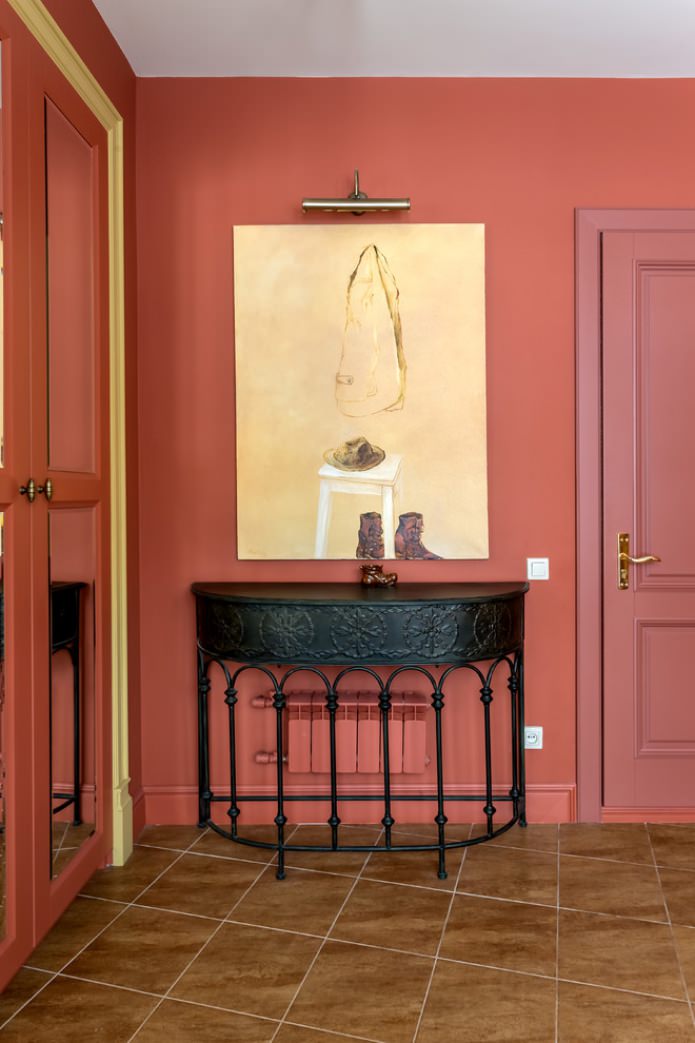
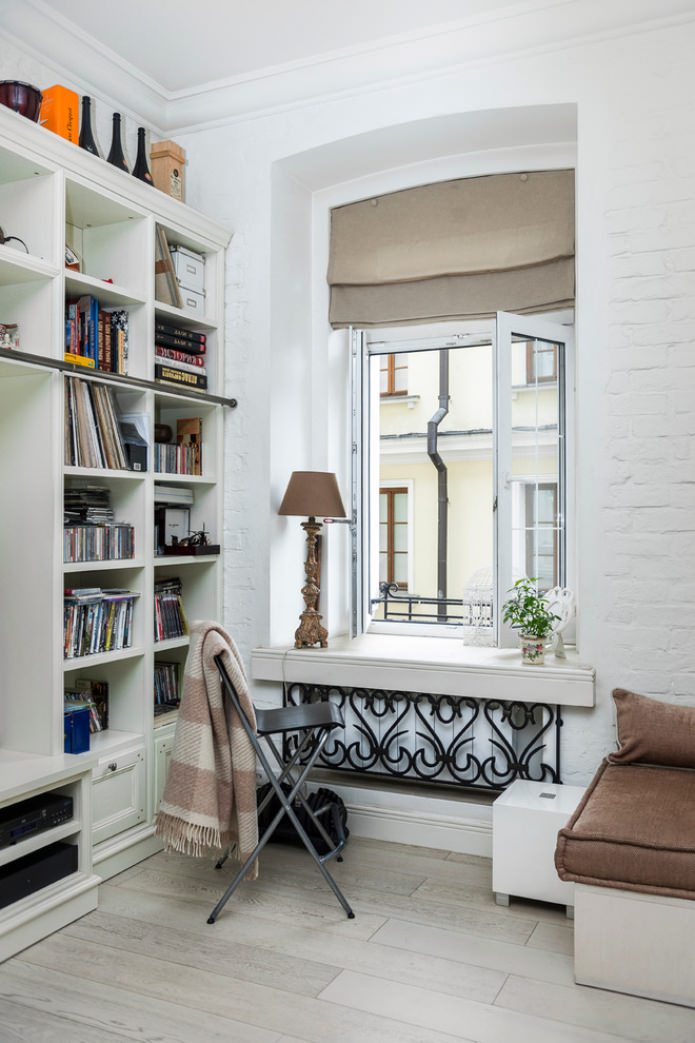
- Hide the radiator with fabric
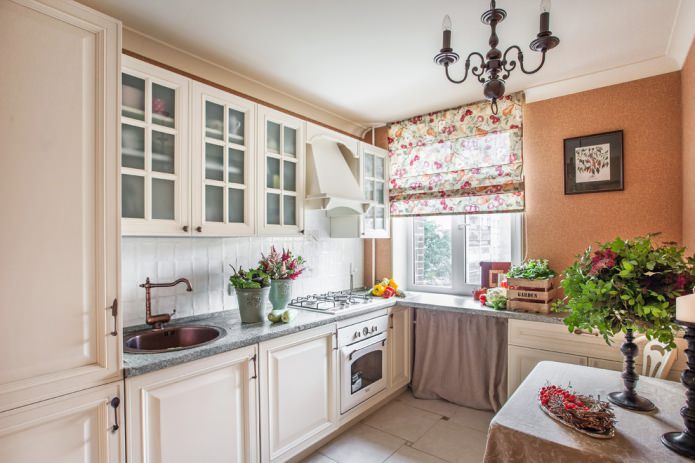
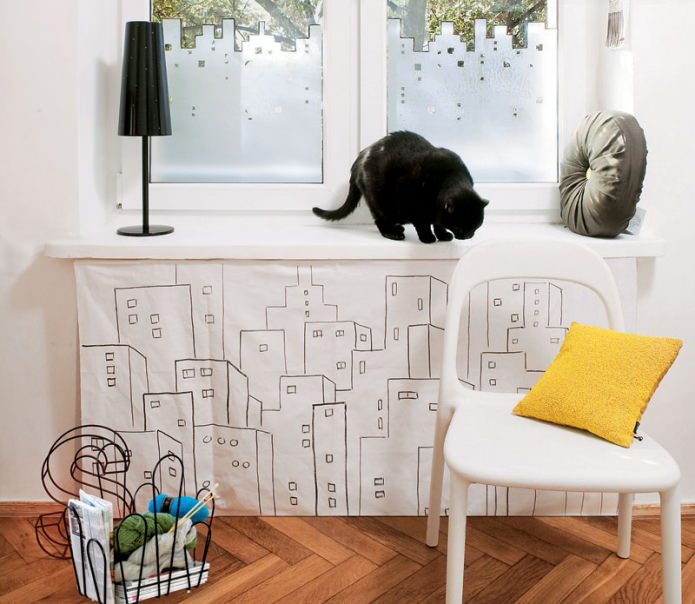
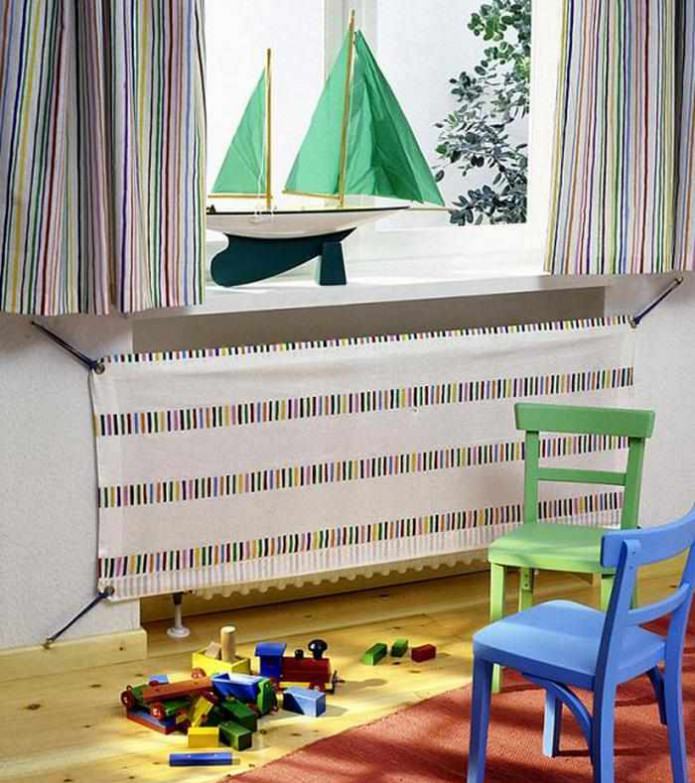
- Painting and decoupage of radiators
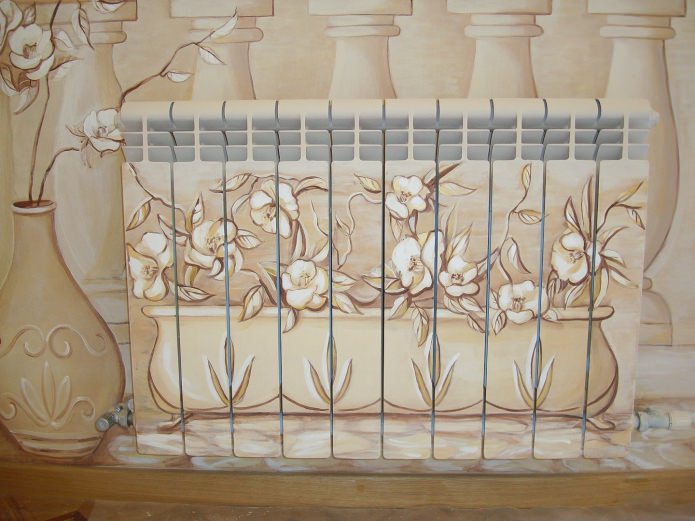
In the photo, with the help of a beautiful painting, the battery has merged with the wall.
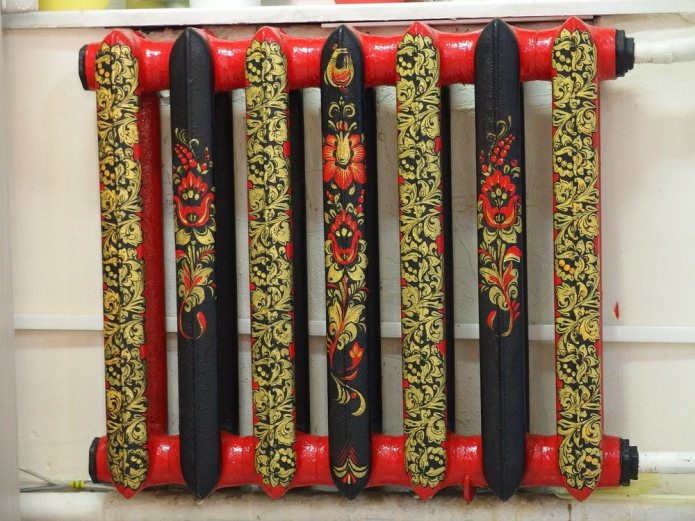
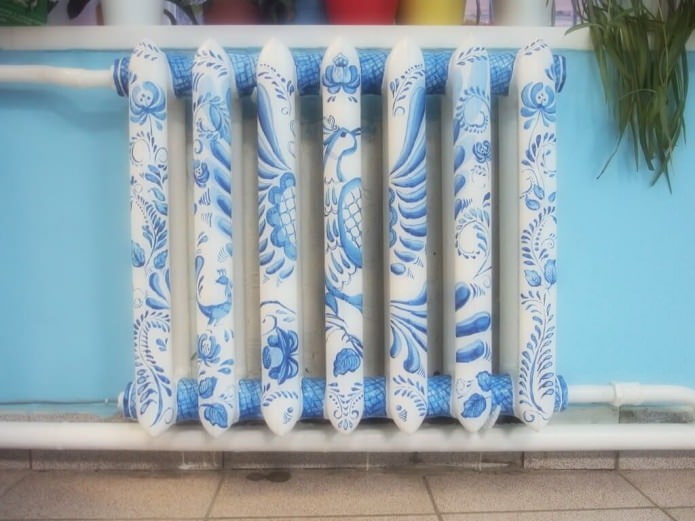
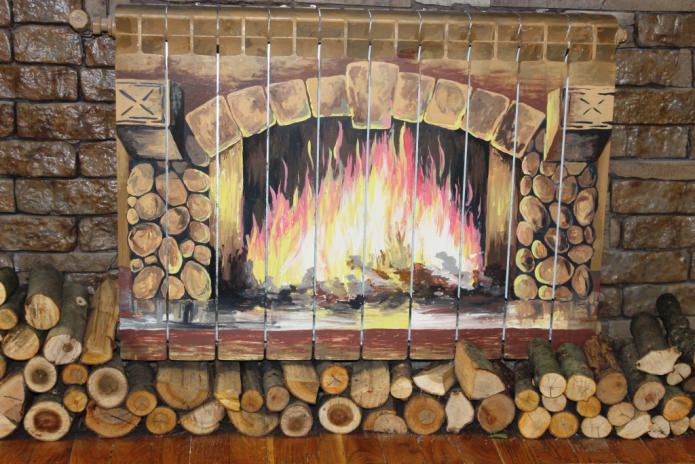
Hide with plasterboard
I would like to talk separately about how you can hide batteries with plasterboard. It is worth noting right away that the material has its drawbacks, but the plasterboard structure is still very popular during repairs.
- The material is environmentally friendly, and it is not subject to combustion.
- Several varieties of this material can be found on the market.
- This masking option is budget-friendly, and installation can be carried out in different ways, as is convenient for you.
- Also, it is plasterboard that will allow the owner of the apartment to come up with any design, which will help not only to cover the pipes and battery, but also to make additional decorative elements.
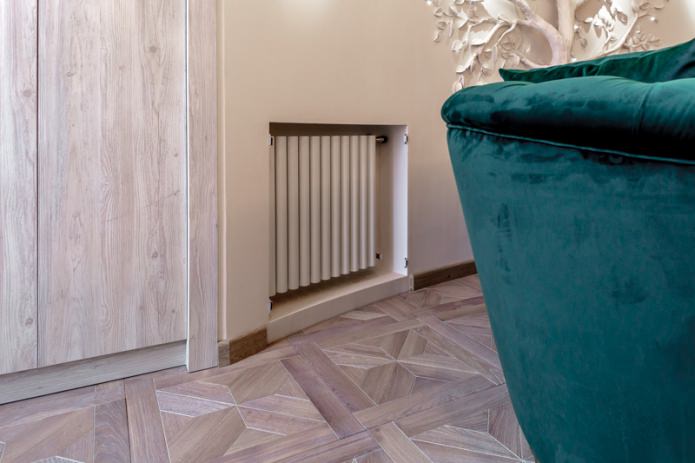
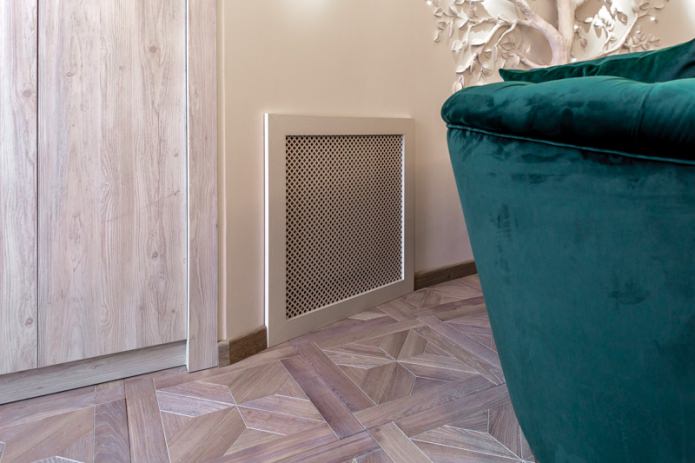
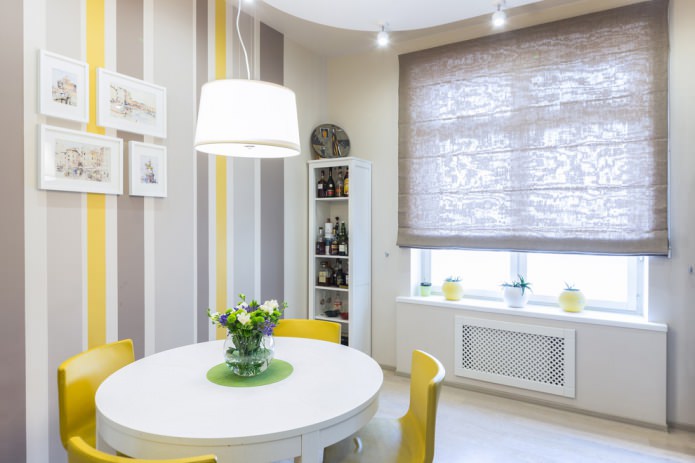
The downside is that drywall is sensitive to external influences; if you are not careful, it is quite easy to pierce or puncture it. And if a breakdown or leak occurs, then the entire finish will have to be replaced again, but this material is cheap.
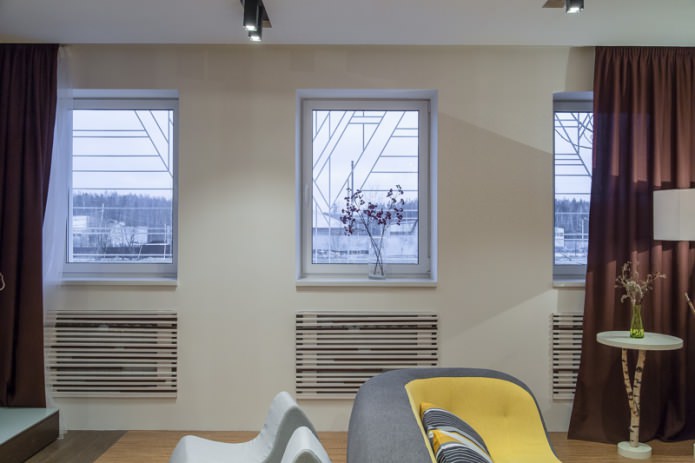
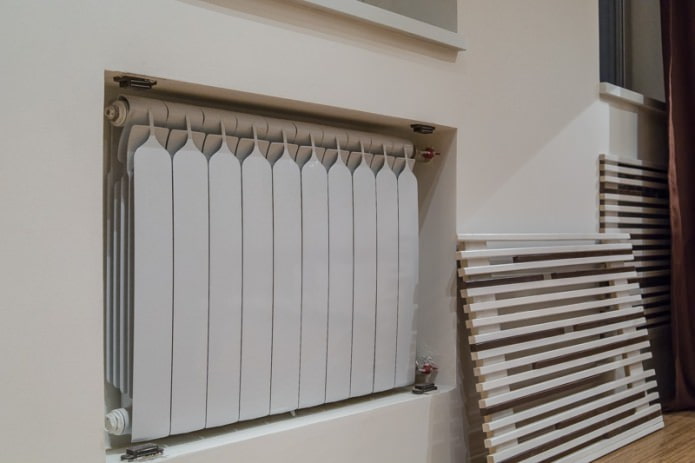
DIY plasterboard box installation
In order to close the battery, you need to measure it, and then buy metal profiles and other additional goods.
- What materials are needed: 12 mm plasterboard sheet, 27×28 and 60×27 metal profiles, plasterboard and metal screws, 6×40 dowel-nails, construction serpyanka, perforated corners.
- Tools: screwdriver, hammer drill, metal scissors, stationery knife, construction stapler, pencil, tape measure, building level.
Attention, there is an important requirement for the construction of a plasterboard box: the window sill must extend beyond the radiator by at least 3 centimeters.
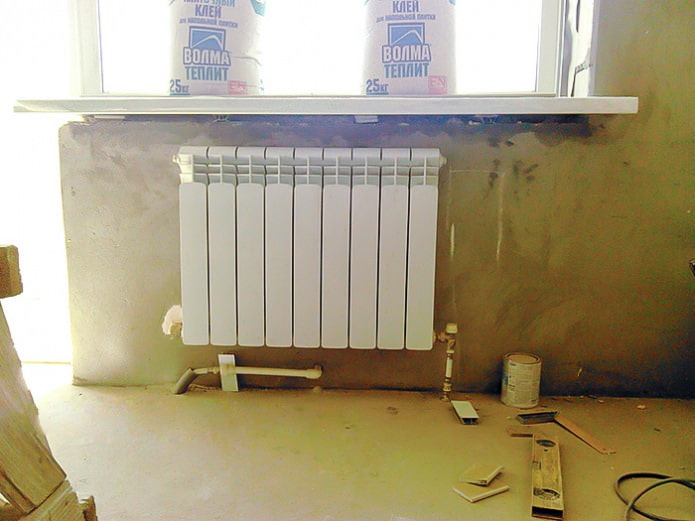
Procedure:
- Installing the frame. The profile should be mounted on three adjacent sides: floor, wall, window sill. Press the 27×28 metal profile to the base with your hand, drill a hole with a hammer drill both in the profile and in the wall. Screw a dowel-nail into the hole with a screwdriver. A 27×28 metal profile is mounted at the bottom of the window sill with self-tapping screws; the length of the screws should not exceed the thickness of the window sill. Next, you can install lintels made of 60×27 metal profile.
- Selecting the size of the grate. This hole must be made slightly smaller than the size of the grate. You can focus on three recommended sizes: 60×120, 60×90 or 60×60.
- Installing drywall. Drywall sheets can be cut with a stationery knife. Screw with a screwdriver.
- Installing corners. They must be secured at the corners with a construction stapler, or attached to gypsum plaster. All seams of the drywall box should be covered with serpyanka and plastered. Before painting or wallpapering, the plasterboard box must be filled, sanded and coated with primer.
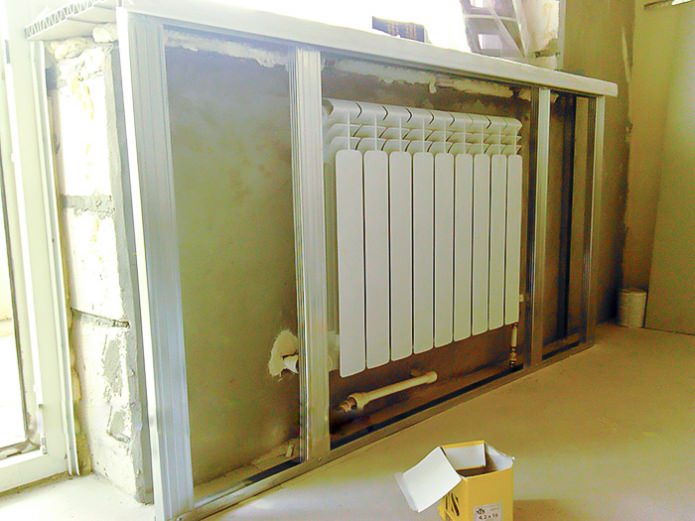
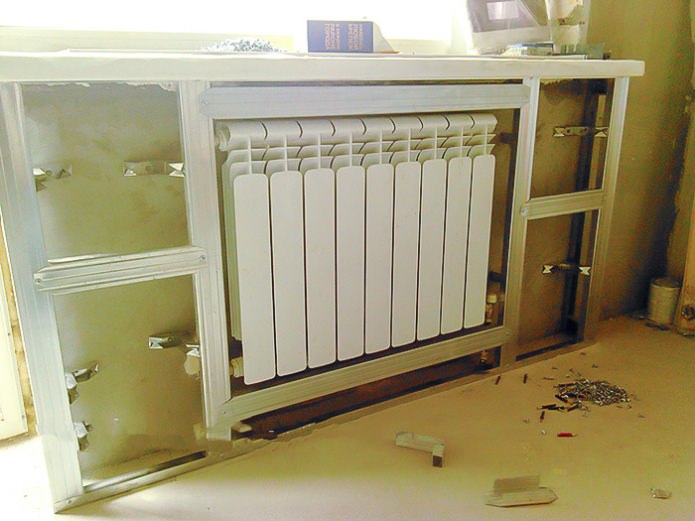
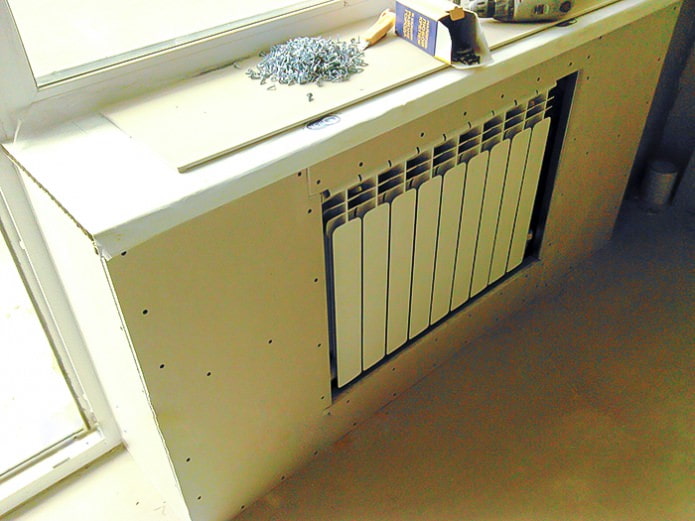
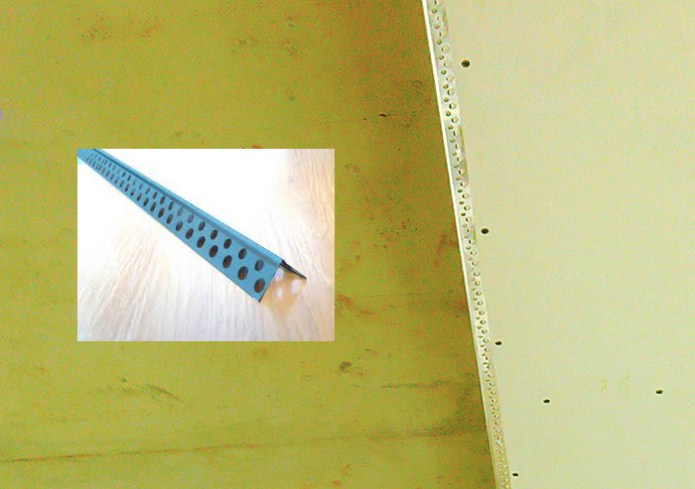
Masking heating pipes
It doesn’t matter if it’s an apartment or a house, a bedroom or a kitchen, we’d like to have a good repair everywhere. Questions immediately arise: how to beautifully hide heating pipes and how can this be done with minimal costs and maximum efficiency? At the same time, the method of masking must be truly invisible and unnoticeable, fitting into the room.
The pipe can be hidden inside the wall, and it can also be closed in the floor. Remember that the old heating system should not be hidden in this way, this option is possible after a complete renovation of all elements.
Box on a frame
It is best to make it from wood, plastic or plasterboard. Do not place the heating pipes too close together; there should be at least three centimeters between the box and the pipe.
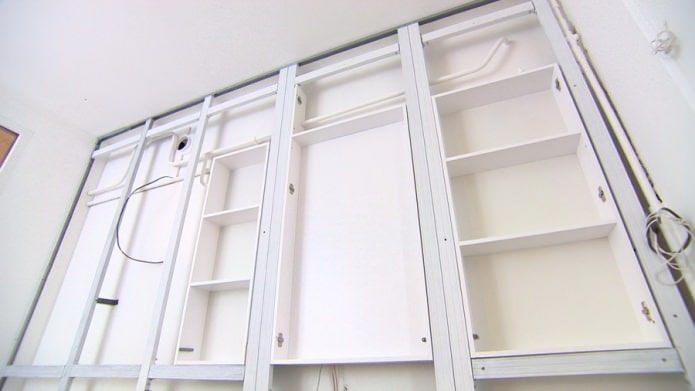
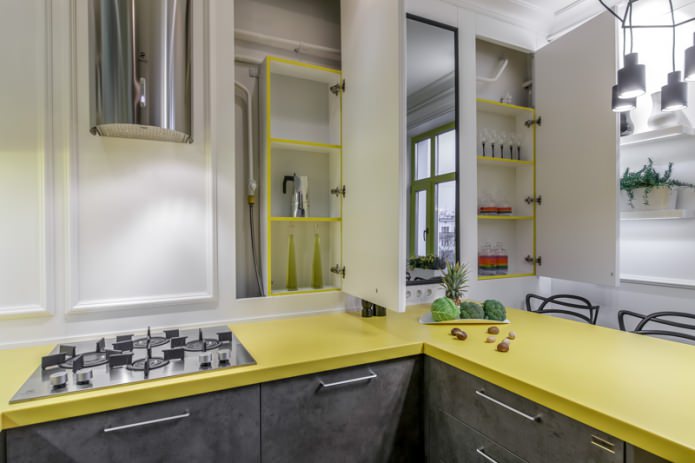
Hide behind decor
Decorate the pipes in various ways, for example, wrap them with jute rope. But remember that this reduces heat transfer. Many owners decorate pipes with flowers; this can be done using bamboo with leaves. Here only your imagination should work, even an old pipe can look completely different.
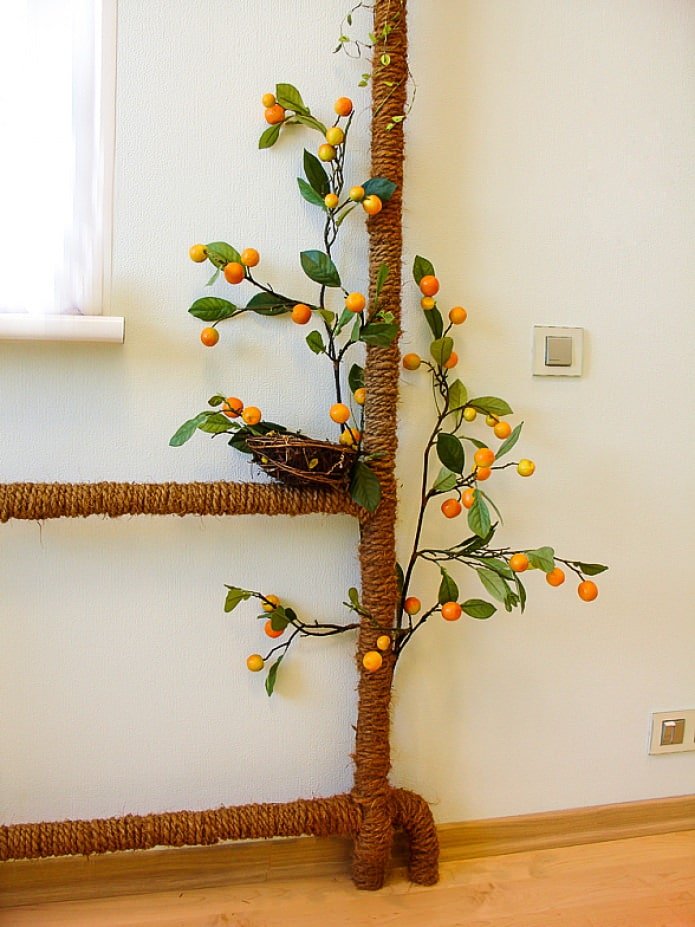
Painting to match the color of the walls
The easiest and most practical method is to paint the batteries or riser in the color of the walls, while the heat emission will not decrease.
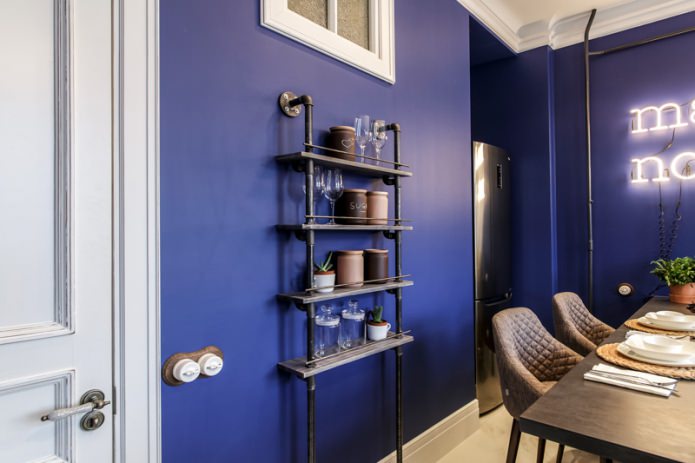
In the photo in in the kitchen interior, the pipes are painted the same color as the blue walls.
Hide under the baseboard
A good invention was the baseboard, in which you can easily hide batteries located horizontally and low to the floor.
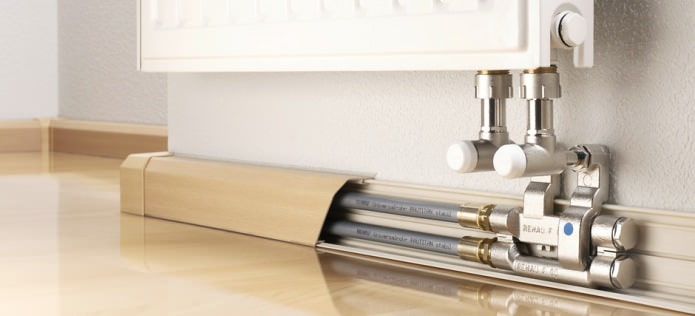
Photos in the interior of the rooms
Kitchen
The kitchen is an ideal room in which all methods of hiding batteries will become practical and convenient. If the room is small, you can hide the battery with a beautiful tabletop or make a folding table that can be folded out when convenient.
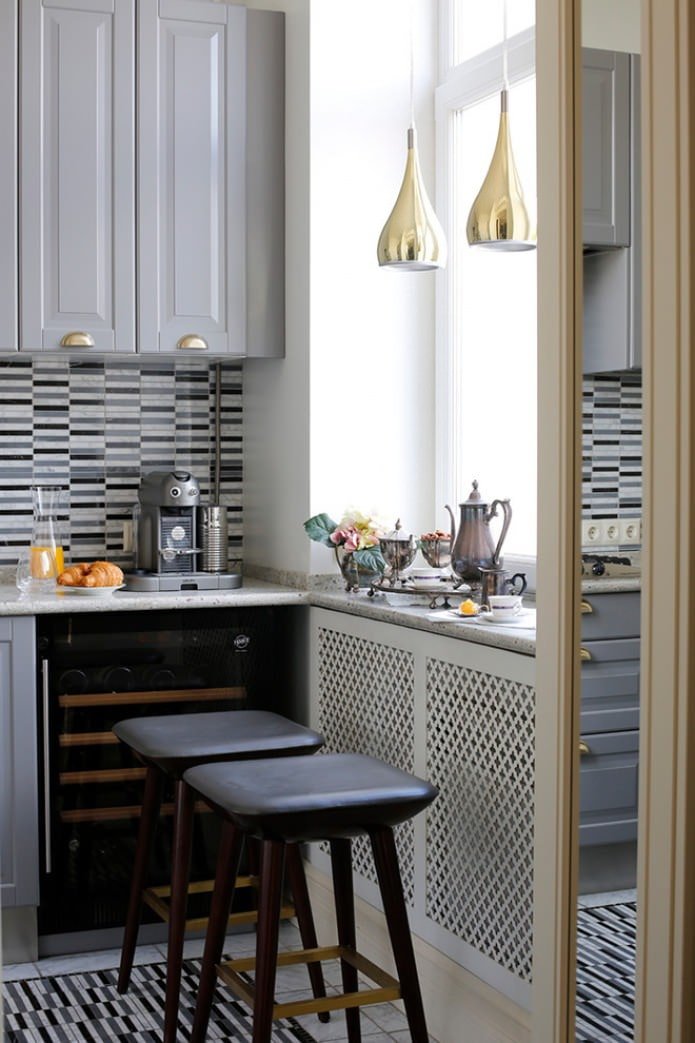
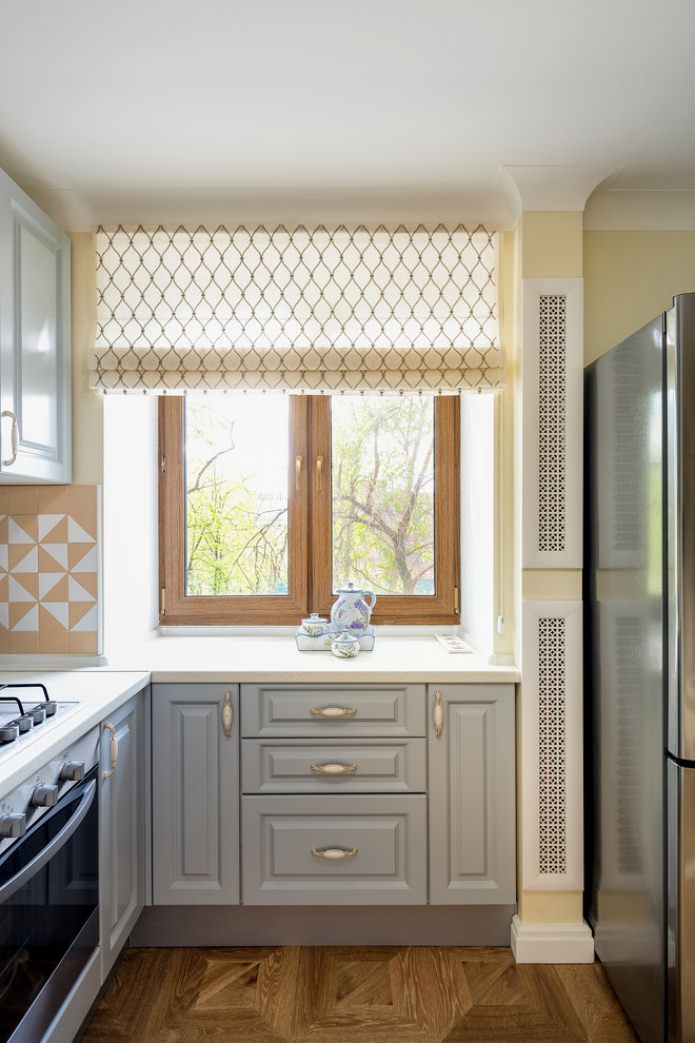
Plastic metal construction factories offer a wide range of beautiful large window sills that imitate stone, wood and other materials. A modern window sill does not break under weight, is not afraid of external factors, is easy to care for, wipe, is not afraid of scratches, and so on. You can hide any type of battery this way, including cast iron.
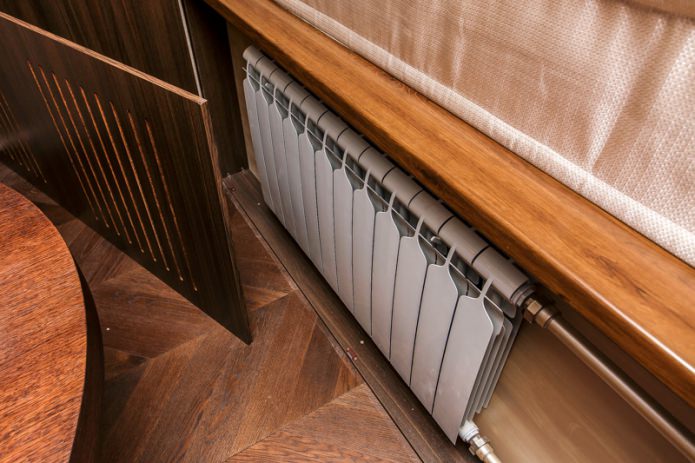
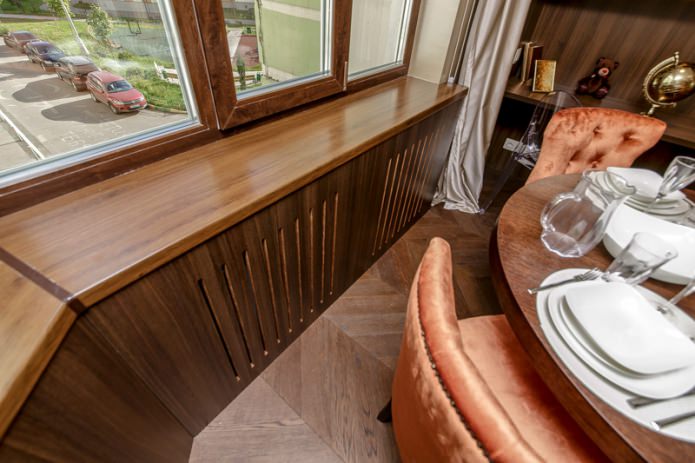
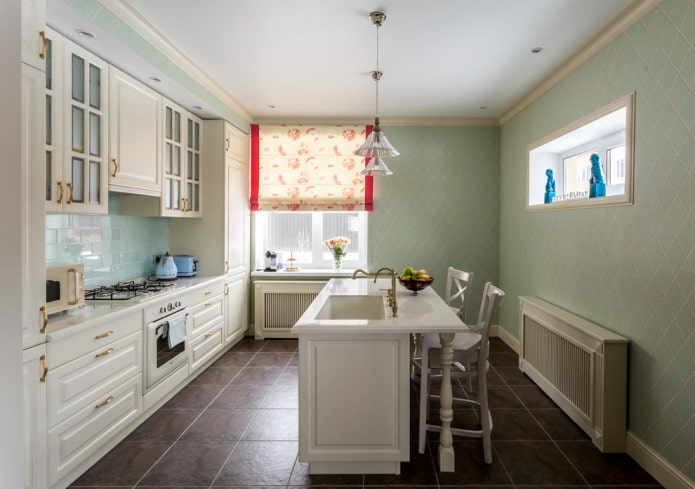
In the photo, wooden boxes were used to disguise the radiators.
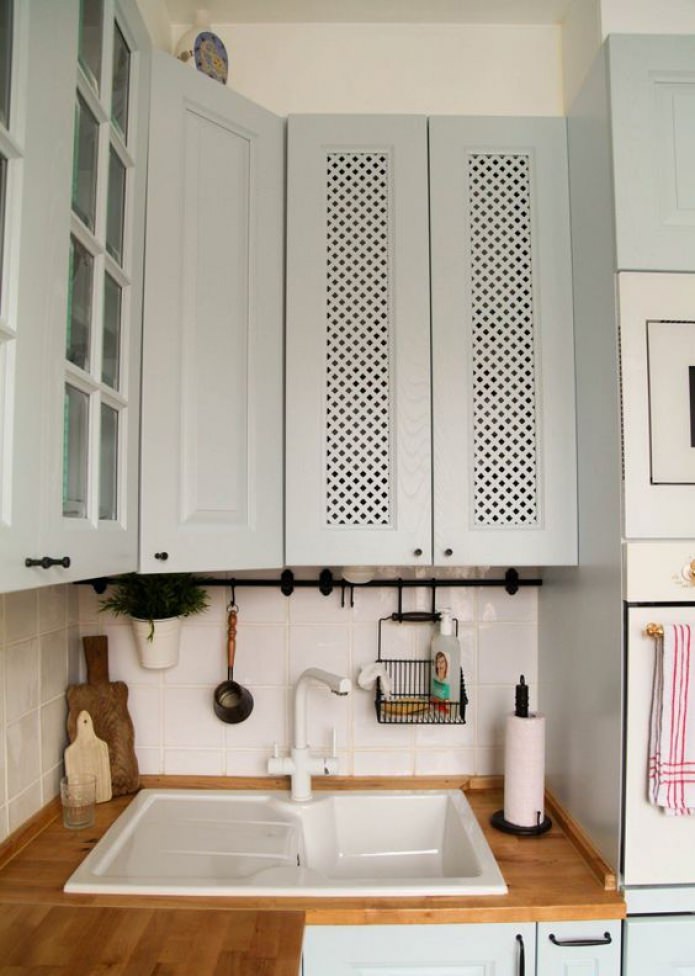
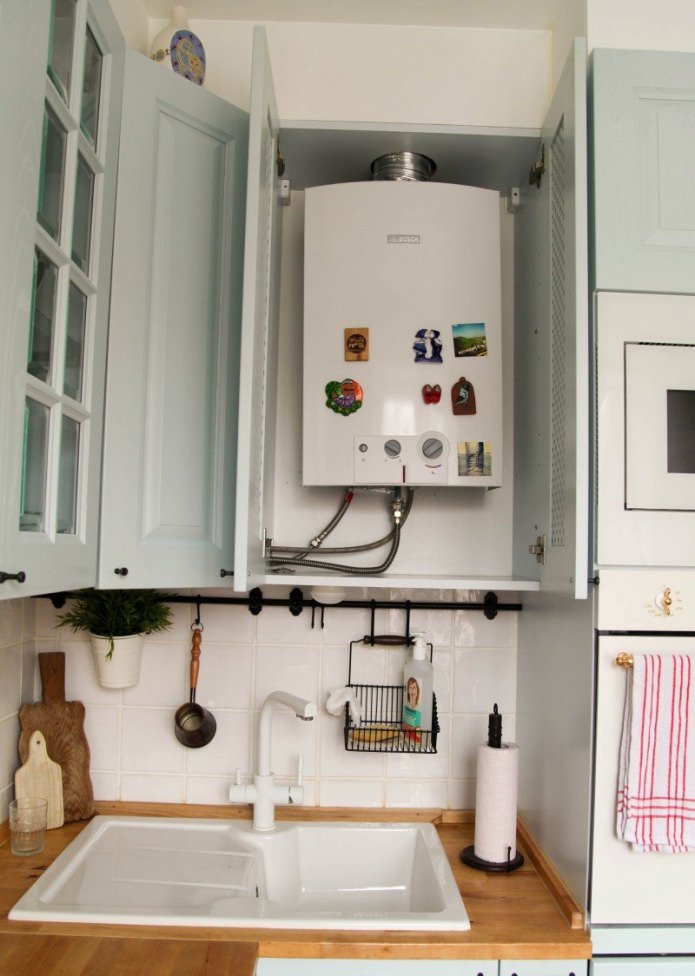
Living Room
If the radiator is in a niche, a wide window sill will help create a work area.
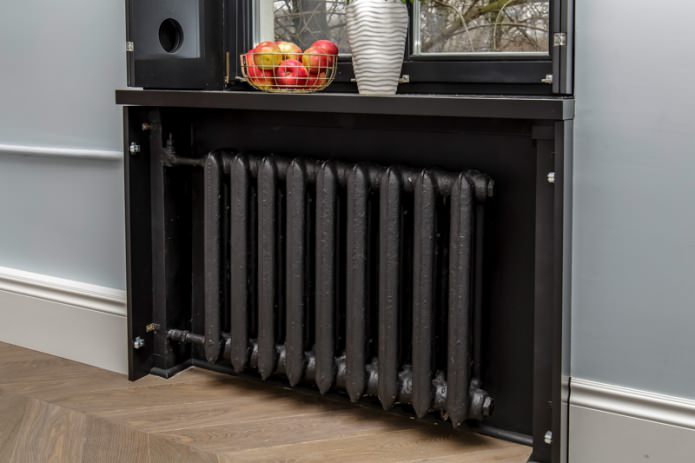
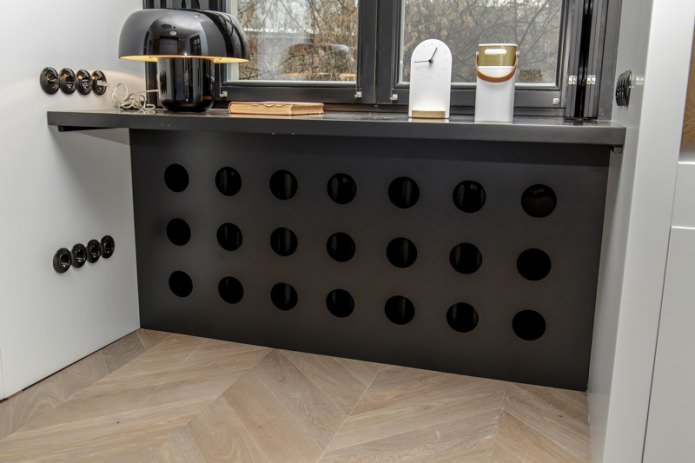
Souvenirs, vases or potted flowers can be placed on the constructed wooden box. You can also cover unsightly radiators in the living room with thick curtains.

The photo shows a modern living room. In order to hide the radiators, a wooden structure was mounted, which also serves as a place for rest, storage and decoration.
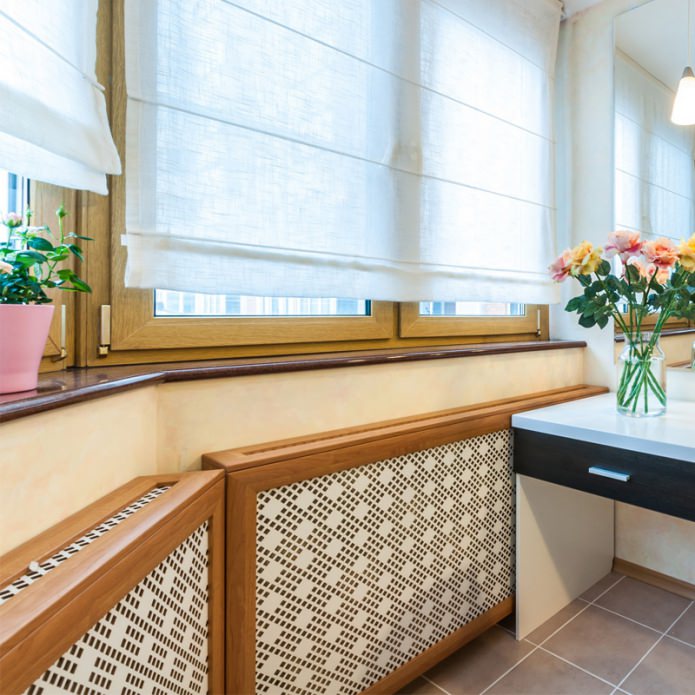
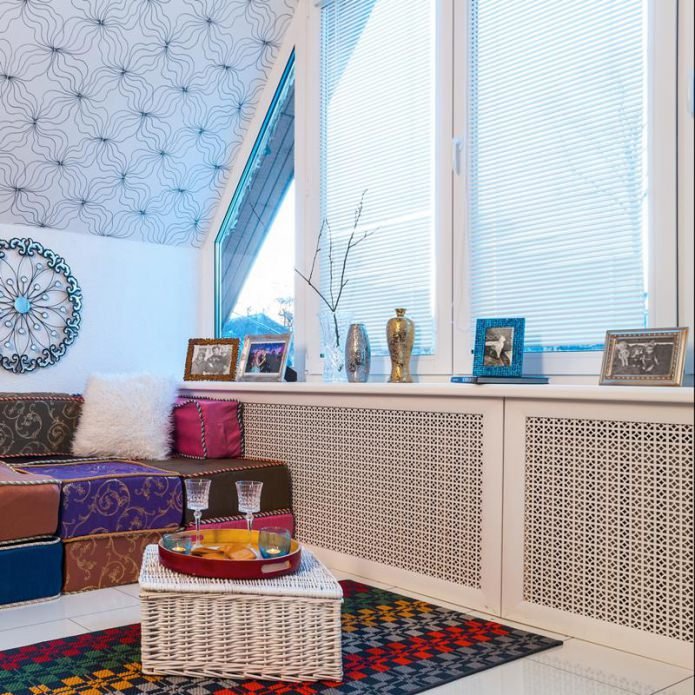
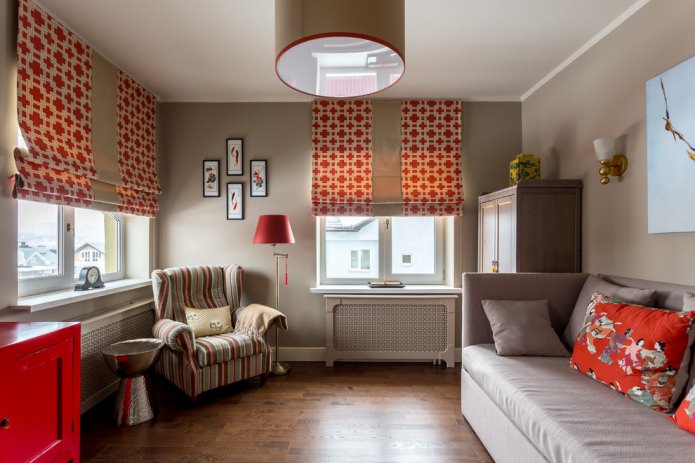
Bedroom and children’s room
In the interior of the bedroom and children’s room, batteries can be used as another place to relax, a tabletop for decorative elements or a workplace.
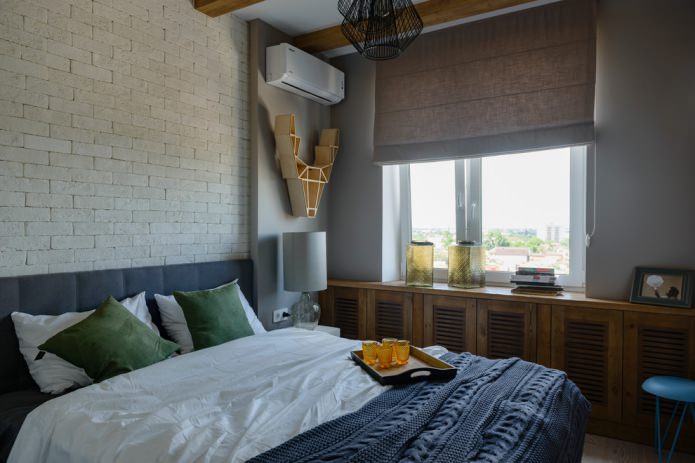
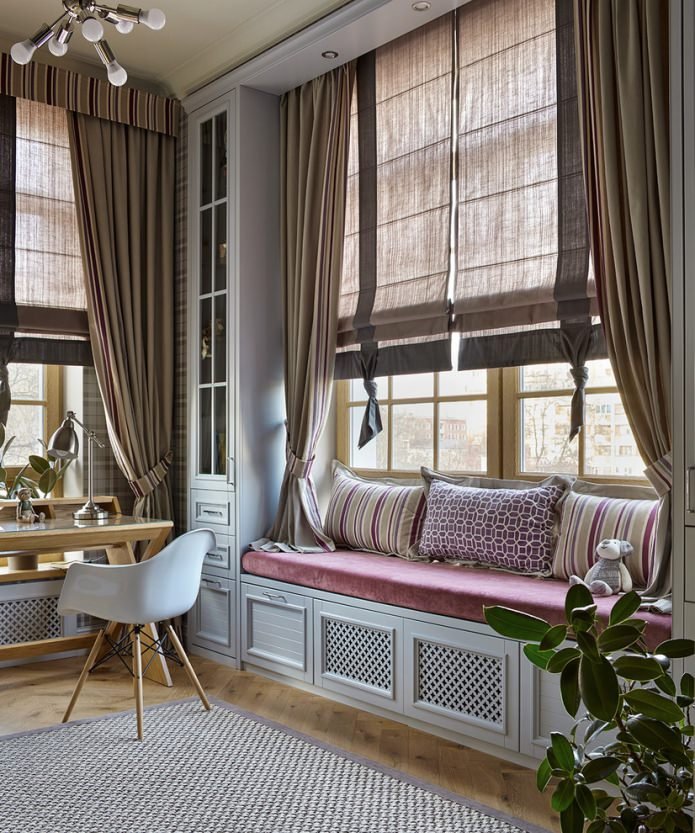
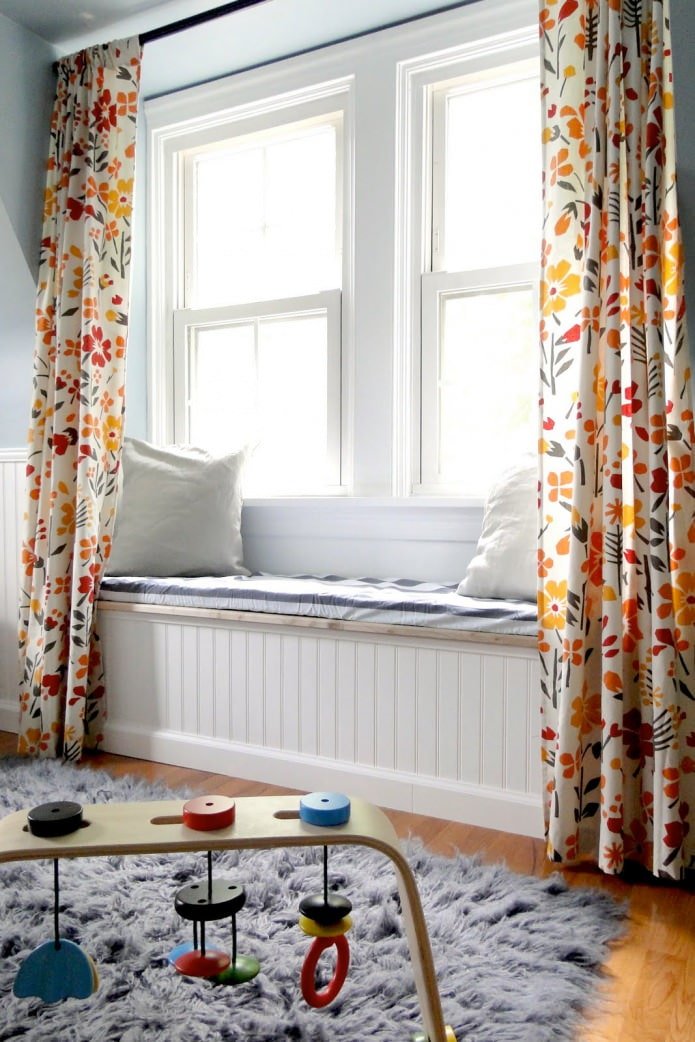

Bathroom
Hide pipes in bathroom can be done with a louvered door, plastic grilles or a cabinet with opening doors.
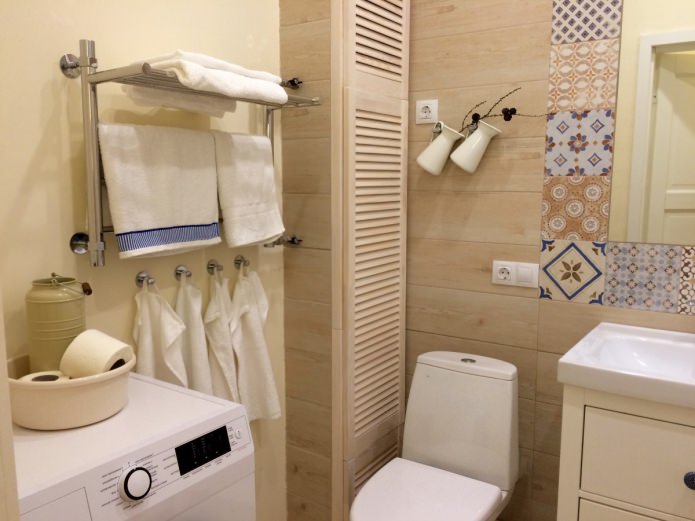
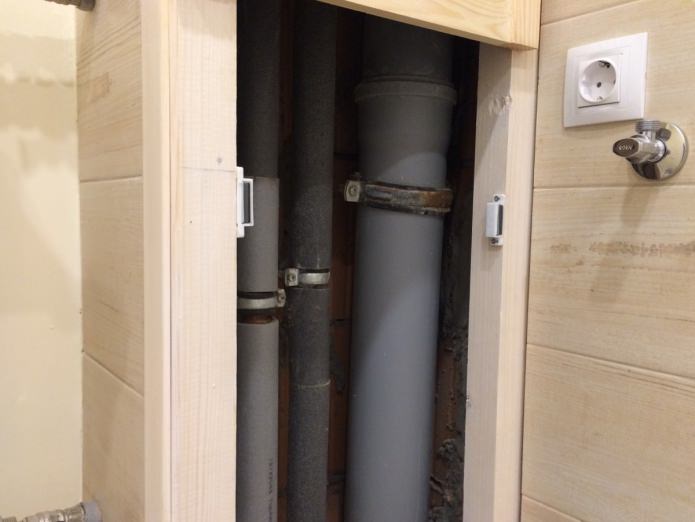
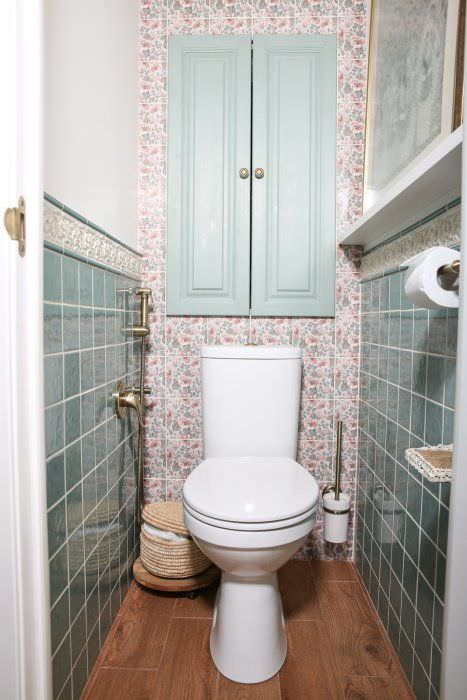



We hide heating batteries using wooden, glass or plastic screens.
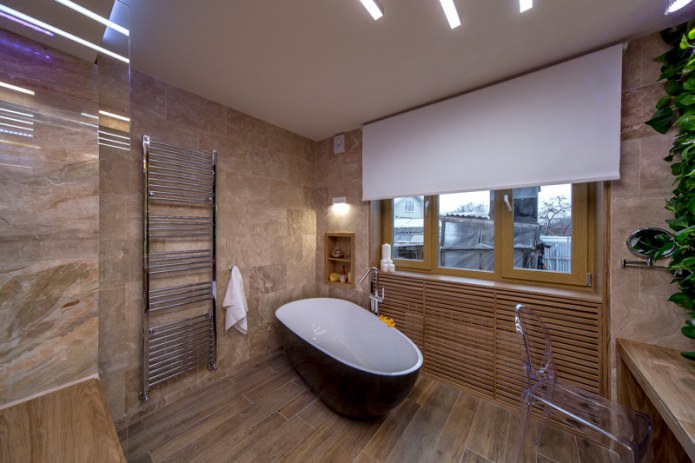
In the photo, the radiators in the bathroom are hidden using a wooden box.
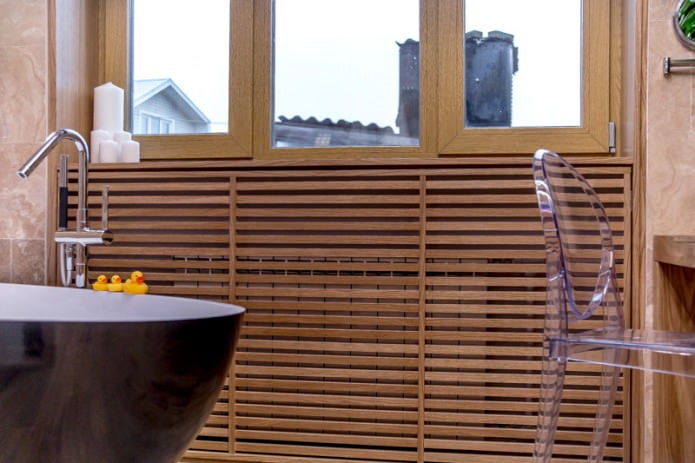
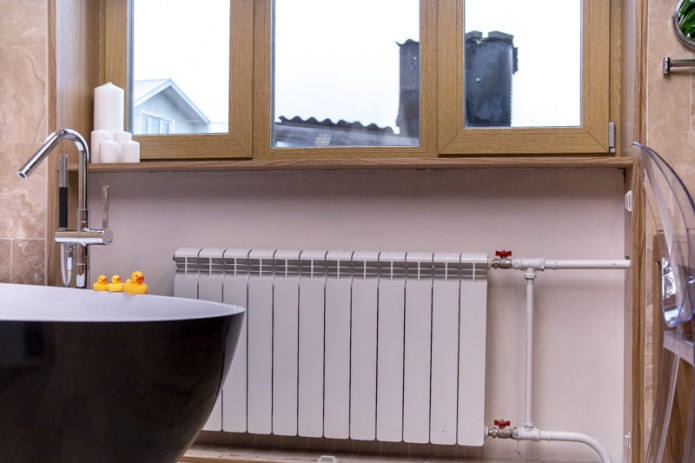
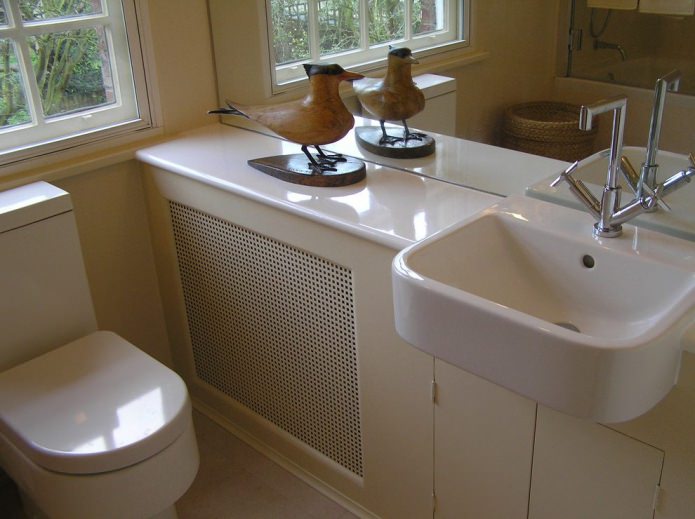
Hallway
For radiators in For hallways, glass screens or wooden boxes are suitable. In a small room, it is necessary to close the radiator only from the point of view of practicality. It can be a cabinet for storing shoes, or the radiator will become a small coffee table where keys and other necessary items will be stored.
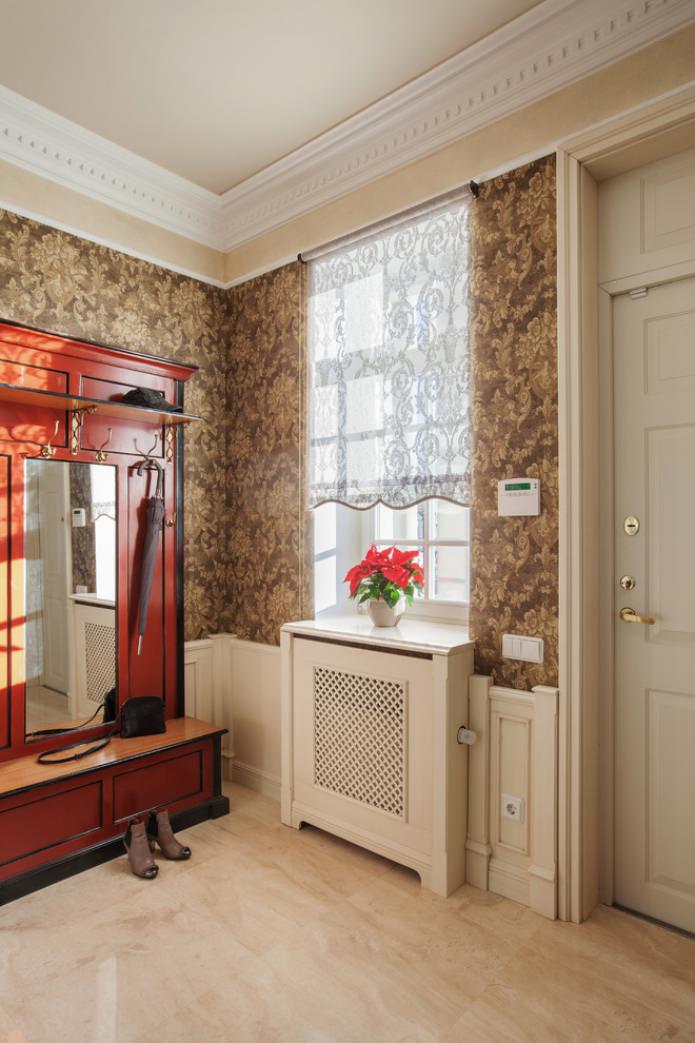
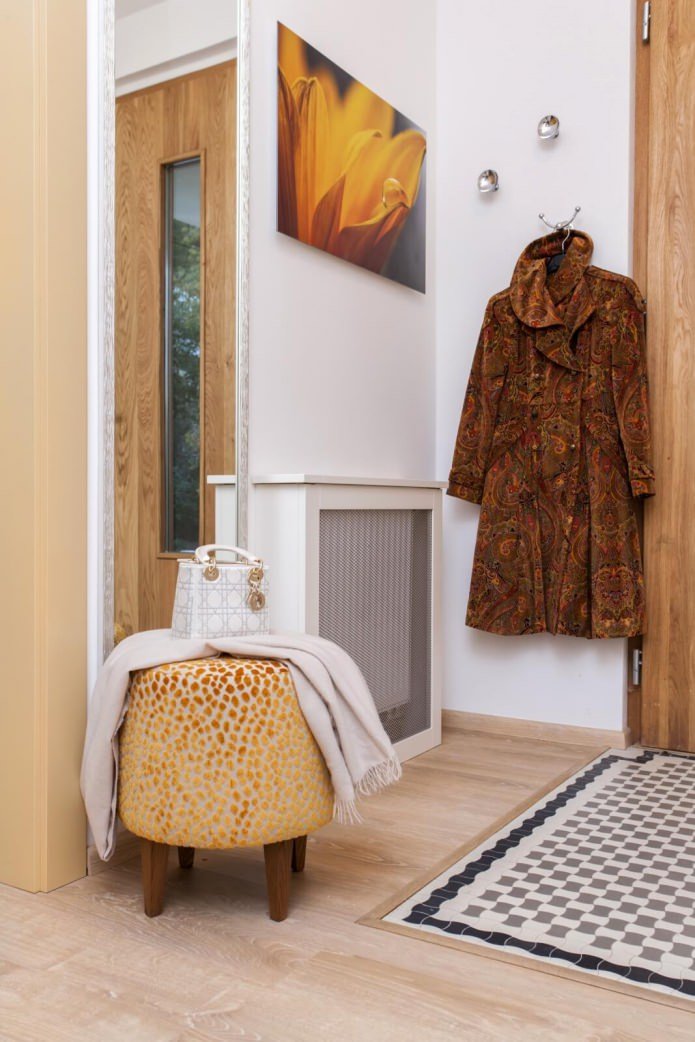
Examples in different interior styles
Modern style
Any material made of wood, glass (glass panels) or metal will do for a modern or high-tech and minimalist style.
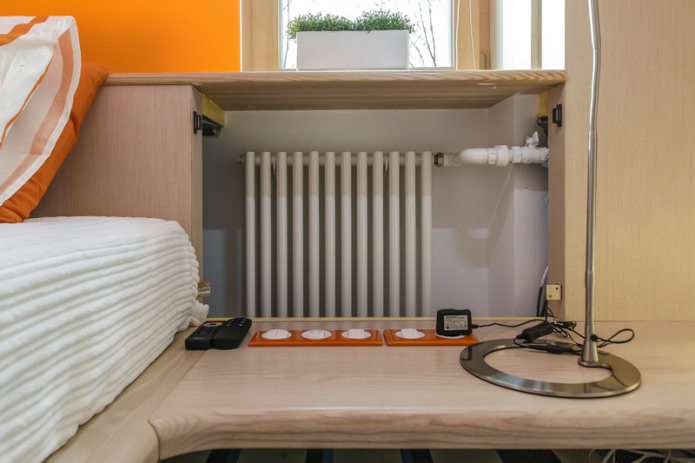
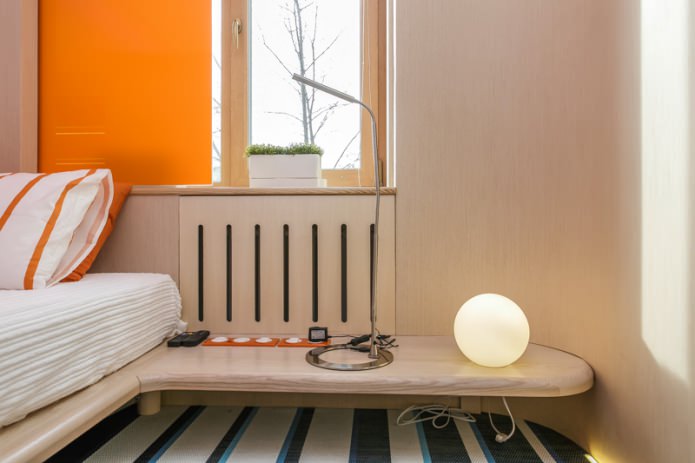
Classic style
It is recommended to use natural materials, it is better to choose on a wooden grate.
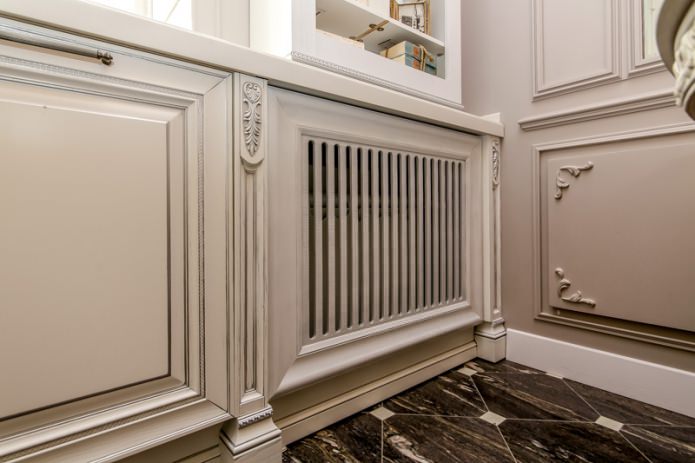
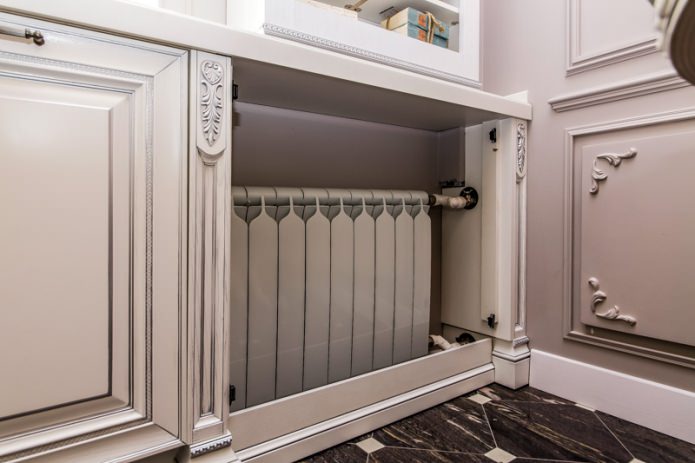
Provence
Wood also loves such styles as Provence, country, chalet and eco-style.
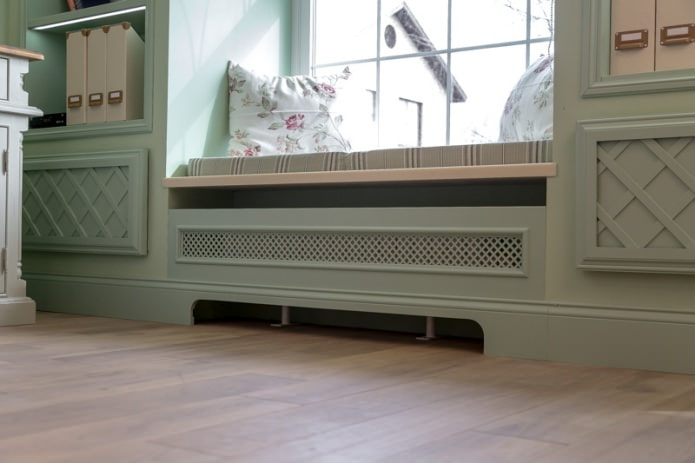
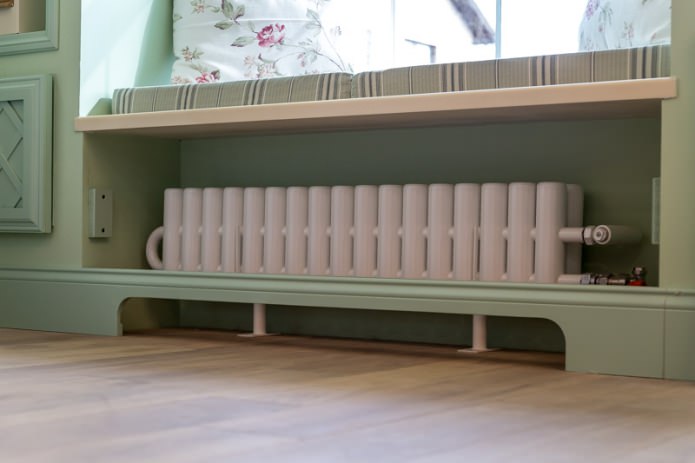
Scandinavian
Wooden grilles in light colors will look appropriate in the Scandinavian style.
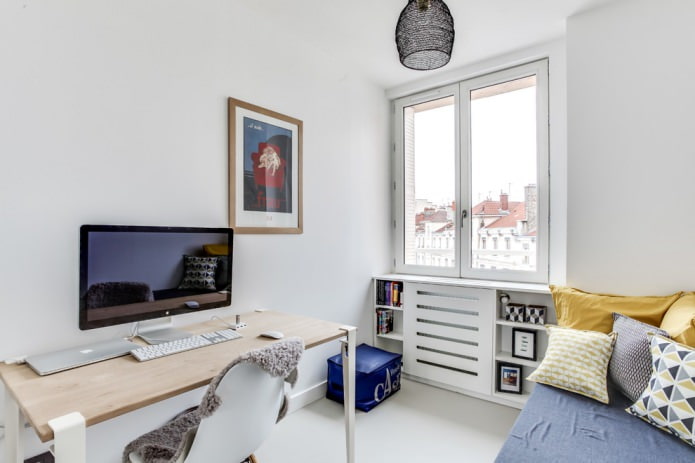
Loft
In the loft style, old batteries and pipes are often not covered, they are left on display or replaced with interesting designer options.
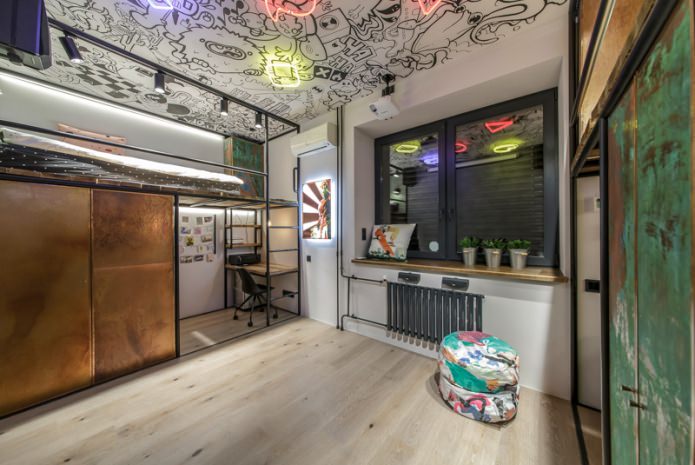
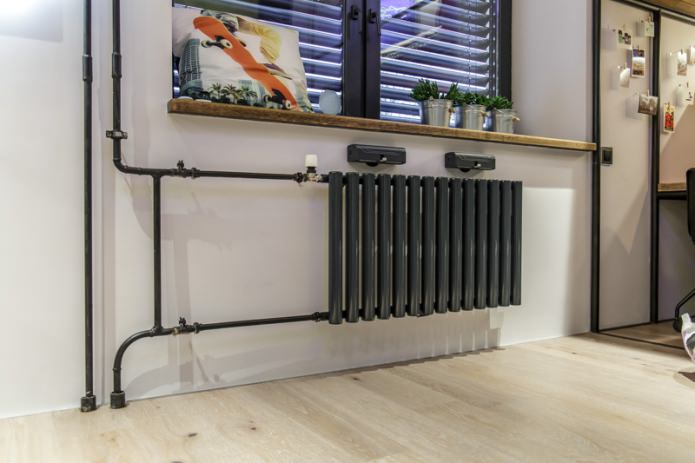
Now reading:
- White children’s room: more than 40 photos and ideas for a stylish interior.
- How to effectively wash the floor: by hand or with a mop? – 8 arguments for and against.
- inspiring examples of wallpaper and paint combinations for a unique interior.
- Kitchen Backsplash Selection Guide: Materials, Advantages, and Disadvantages (31 Photos)
- Discover the VW Jetta: A Blend of Style and Performance